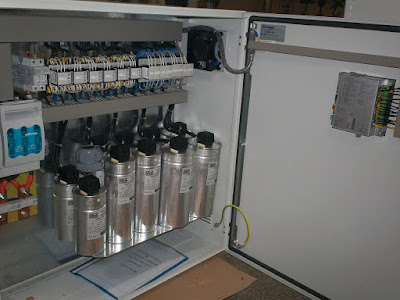I usually work with a low voltage capacitor banks for power factor correction. Then people ask me how it works? Lots of these people are from other professions and don’t have a knowledge of electrics. It is hard to explain it in a simple language with don’t using electric’s terms and formulas.
Now I try to explain power factor correction for everyone, don’t depend from professions.
This isn’t science text and don’t complain if I mix some basic physic terms.
The electric distribution system gives to us the electrical energy through AC voltage and current. In an industry we have two types of energy, one is active (kW), and other is reactive (kvar). Active electrical energy converts in other types of energy like heat, mechanical work, chemicals when charging batteries, light and other. Reactive energy used for creating and maintaining a magnetic field in electrical motors, inductive heaters, some kinds of lights and other. Reactive energy created and maintained a magnetic field on way that it takes energy from the electric distribution system and then returns it to the electric distribution system. This is reason why it calls reactive. Power factor presents ratio of active and reactive energy.
A capacitor needs just reactive energy for creating and maintaining electrical field. It is function just like magnetic field it terms of take and back energy from the electrical distribution system. One thing is different, the timing of take and back energy. When magnetic field take energy, electrical field would back energy and conversely. When we add a capacitor load reactive energy from magnetic field and reactive energy from electrical field added energy to each other and don’t take energy from electric distribution system. Consequence is low energy form the electrical distribution system, low main current, and low electrical power consumption bill. This is the way how works power factor correction. This is some kinds of paradox, we add capacitors, more loads to the electrical distribution system and electrical power consumption goes down.

In industry we use low voltage capacitor banks in transformer stations. There is power factor regulator which power on or off capacitors depends of reactive power consumptions.
If someone has better idea how to explain power factor correction, please contact me.





